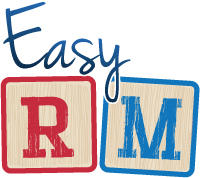 During the final webinar in our three-part series “Modernizing Document Processing,” Phil Robinson, SVP at Zia Consulting, discussed the benefits of EasyRM. With ever-increasing oversight, volumes and variability of content as well as cost and complexity, companies are looking for solutions. This is seen in financial services, healthcare, the public sector as well as corporate finance and HR.
During the final webinar in our three-part series “Modernizing Document Processing,” Phil Robinson, SVP at Zia Consulting, discussed the benefits of EasyRM. With ever-increasing oversight, volumes and variability of content as well as cost and complexity, companies are looking for solutions. This is seen in financial services, healthcare, the public sector as well as corporate finance and HR.
We often hear that legacy RM systems have low user adoption,they lack automation and integration, have siloed content distinct between DM and RM systems, there’s a lack of cloud options, and, of course, the problem with paper. This leads to a compromise in security and governance. Our solutions look to connect creators with compliance.
To make RM user friendly, we integrate with tools users are already employing. Through automation, the entire process can be handed without a need for user input. These modern systems provide a single repository to search against that helps manage paper records and leverages cloud-based technology for low-cost storage options.
In a sample customer use case, we walked through a client who had been primarily storing paper records and the associated cost and complexity. How could they digitize 100+ years of paper and ensure they were properly handled with retention and disposition schedules? By using our RMNow solution and Alfresco as a repository, they were able to digitize the past and have all electronic records management moving forward.
The first place we start when creating an EasyRM solution with a client is encouraging user adoption, with three critical features:
- In-Place Records Management
- Automated, Event-Driven Record Declarations
- Intelligent, Dynamic File Plans
From there, our focus on integration is part of every engagement. By allowing users to continue with the tools they’re comfortable with—such as Outlook, SAP, Oracle, and Dynamics—user adoption becomes standard. By creating modern systems, your company has an automated system where paper is no longer a problem and users are able to access content in tools they’re comfortable with—even in the cloud.
To learn more, you can view the recorded webinar here or the presentation slides here. Visit our RM webpage for more information, including our RM for Alfresco demo.
